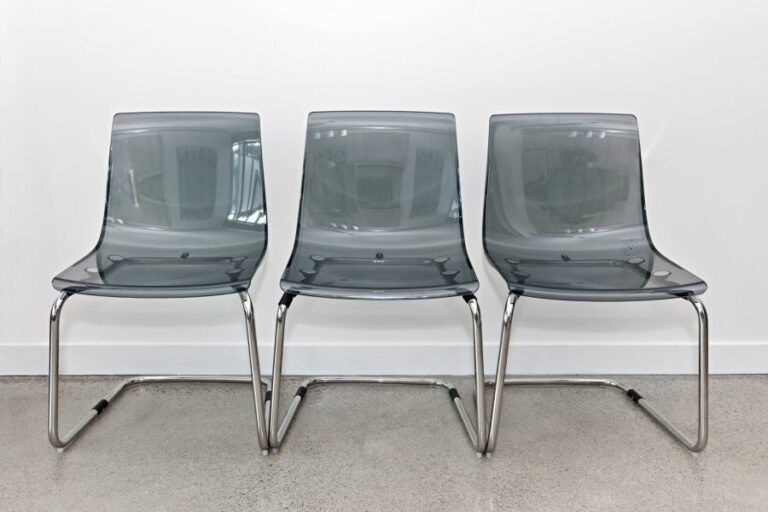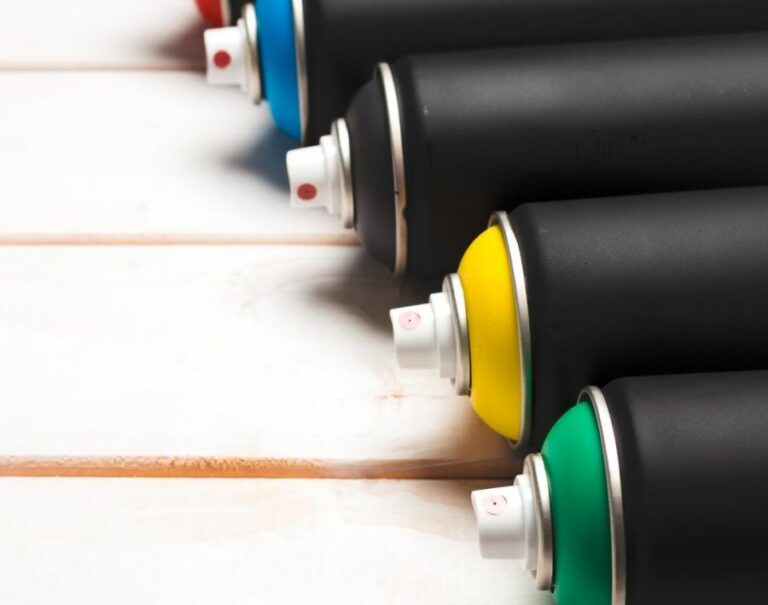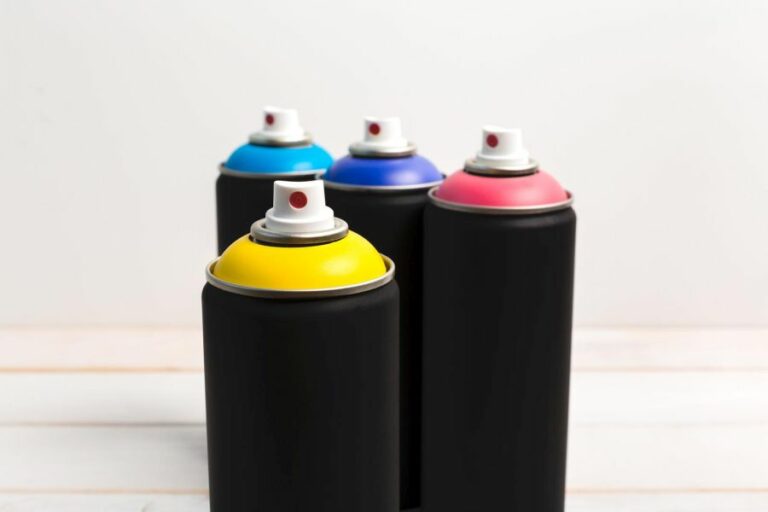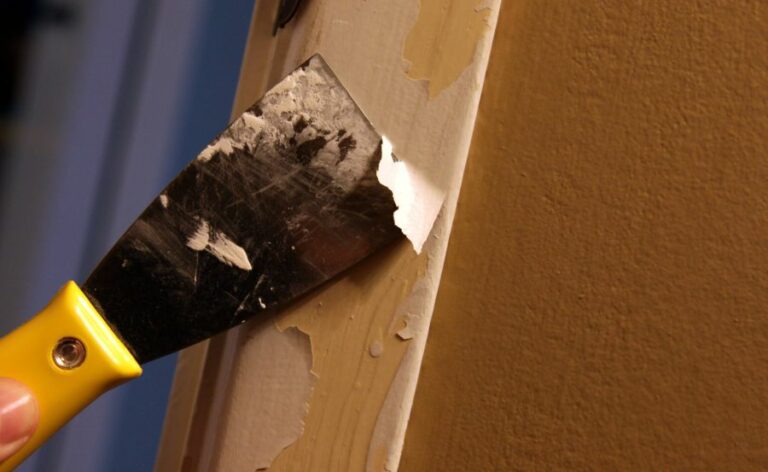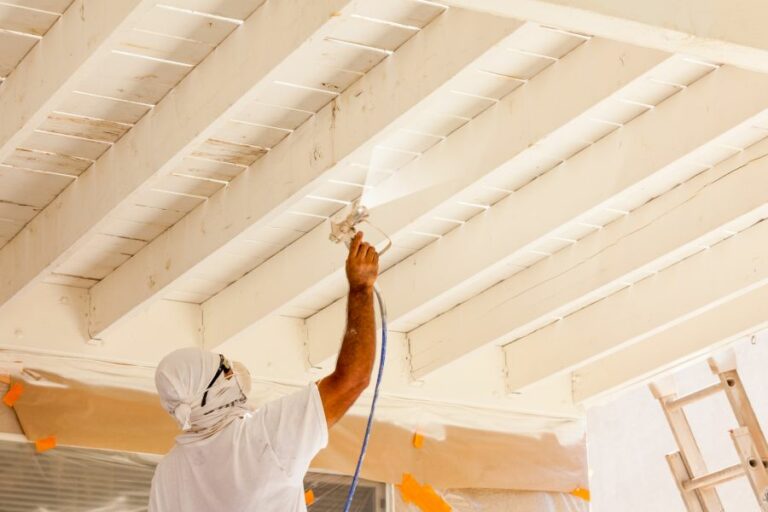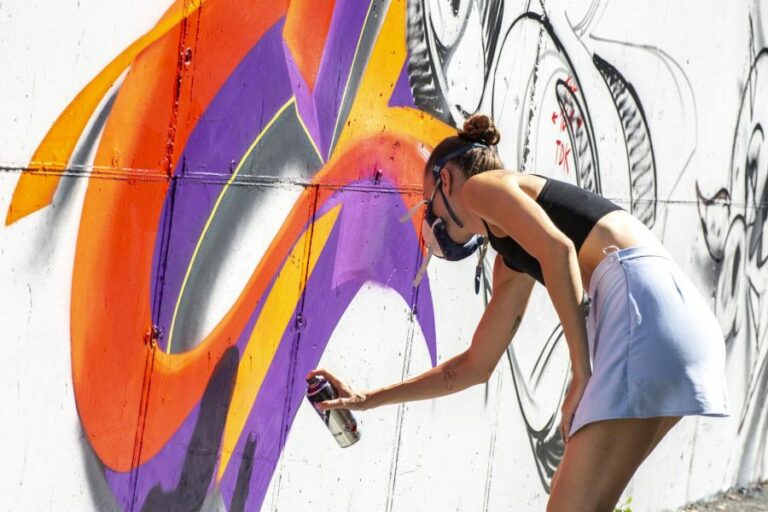Benefits Of Ultraviolet Reactive Paint. What Pros Say
Ultraviolet reactive paint has become increasingly popular among artists and event planners with the rise of unique and innovative design options. But did you know these captivating, glow-in-the-dark paints have several benefits that extend beyond their visual appeal? Join me as we dive into the world of UV-reactive paint and explore its numerous advantages, ensuring you make the most out of this extraordinary artistic medium.
Benefits of ultraviolet reactive paint:
Ultraviolet reactive paint offers benefits such as enhancing visual art and performances, increasing visibility and safety, providing security and authentication, assisting in education and research, and being eco-friendly and non-toxic. Its vibrant glow under UV light makes it versatile for various art, safety, and research applications.

Uncover the fascinating world of ultraviolet reactive paint and its numerous applications! Discover how it can elevate your art, help with safety measures, and create unique visual experiences. Read on to learn more about this versatile medium and how its vibrant effects can benefit you!
Contents
- 1 Advantages of UV Reactive Paint
- 2 Understanding the Longevity of UV Reactive Paint
- 2.1 • Quality Matters: The Importance of Choosing High-Quality UV Reactive Paint
- 2.2 • Application Matters: Proper Preparation and Techniques for Longer-Lasting Paint
- 2.3 • Environmental Conditions Affect the Longevity of UV Reactive Paint
- 2.4 • Proper Storage and Maintenance to Extend the Life of UV Reactive Paint
- 3 Functions and Effects of UV Paint
- 4 Understanding UV Reactive Paint
- 5 Can UV Reactive Paint Illuminate in Darkness?
Advantages of UV Reactive Paint
Ultraviolet (UV) reactive paint, also known as fluorescent or glow-in-the-dark paint, is a unique and versatile type of paint that can be used for various applications. It is specially formulated to emit a vibrant glow when exposed to ultraviolet light or blacklight.
This innovative paint has several benefits and can be utilized in various sectors, ranging from art and design to safety and security.
• Enhance Visual Art and Performances
One of the most striking benefits of UV reactive paint is its ability to create visually captivating and mesmerizing effects in art and performances. When applied to surfaces, it creates a stunning, luminous effect that can add depth, dimension, and mystery to artworks.
Moreover, UV reactive paint can be used to create high-impact visual displays for concerts, festivals, and other live performances. The fluorescent glow produced by the paint under blacklight enhances the overall sensory experience, leaving the audience in awe.
Artists can use this paint to create intricate body art designs, costume details, or even hand-held props that add to the overall appeal and excitement of their performances.
• Increases Visibility and Safety
Another significant benefit of using UV reactive paint is its ability to increase visibility and therefore enhance safety. The paint’s high visibility in low-light or dark conditions can be used to improve safety in various environments.
For instance, UV reactive paint can be used on emergency exit signs or safety equipment to help people find their way to safety quickly in case of an emergency.
Additionally, it can also be applied to delineate steps, walkways, or other potentially hazardous areas, effectively reducing the risk of accidents in low-light situations.
• Security and Authentication
Since ultraviolet reactive paint is not visible under normal lighting conditions, it can serve as an excellent tool for security and authentication purposes.
The paint’s invisible nature allows it to be discreetly applied to objects without disrupting their appearance while still providing a clear indication of authenticity when viewed under a UV light source.
This feature of UV reactive paint can be used to deter counterfeiting and ensure the genuineness of currency, documents, or products. Businesses can use this paint to secure their valuable assets and protect their brand reputation by verifying the authenticity of their products.
• Beneficial in Education and Research
UV reactive paint can also be instrumental in the educational and research setting.
It can be utilized as a teaching tool in science and chemistry classes to demonstrate various concepts by visually displaying the presence or absence of certain substances when exposed to UV light see this resource from the University of California, Riverside for more information on ultraviolet light experiments.
The vibrant glow of the paint under UV light aids in drawing the students’ attention and reinforcing learning significantly.
In research and laboratory settings, UV reactive paint can be used to track the spread of microorganisms, study fluid dynamics, or trace the movement of small particles. Its ability to glow under UV light can help researchers visualize and analyze their data more effectively.
• Eco-Friendly and Non-Toxic
Modern UV reactive paint formulations are typically eco-friendly, non-toxic, and safe for use on various surfaces. This environmentally conscious aspect of the paint makes it appropriate for a wide array of applications and settings without the worry of harmful effects on people, animals, or the environment.
• Recommendations for Using UV Reactive Paint
Based on the benefits and applications discussed, I recommend using UV reactive paint in the following situations:
- For artists and performers seeking to create visually striking and immersive experiences for their audience.
- In environments where increased visibility and safety are a concern, such as staircases or emergency exit signage.
- For businesses looking to secure valuable assets or verify the authenticity of their products.
- As an engaging teaching tool in educational settings or as a research aid in laboratories.
- When seeking an eco-friendly and non-toxic paint option for various projects.
– Conclusion
Ultraviolet reactive paint offers a myriad of benefits and applications in various sectors, ranging from art and entertainment to safety and research. Its unique ability to emit a vibrant glow under UV light, coupled with its eco-friendly and non-toxic nature, make it an excellent choice for many projects and situations.
Anyone considering using UV reactive paint should assess their needs and desired outcomes to ensure the proper use and maximize the potential of this versatile paint.
Understanding the Longevity of UV Reactive Paint
UV reactive paint, also known as fluorescent paint or glow-in-the-dark paint, is an innovative type of paint that responds to and emits light when exposed to ultraviolet (UV) radiation.
One of the most common questions regarding this type of paint is, “How long does UV reactive paint last?” The answer to this question is not simple, as it depends on various factors, including paint quality, application method, and environmental conditions.
• Quality Matters: The Importance of Choosing High-Quality UV Reactive Paint
The longevity of UV reactive paint largely depends on the quality of the paint used. High-quality paint with a strong UV-reactive pigment will generally last longer than cheaper, lower-quality alternatives.
When choosing UV reactive paint, it is essential to select a reputable brand with good user reviews and a proven track record of durability.
For instance, paints specifically designed for body art or outdoor applications might have additional protective ingredients to ensure they last longer under harsh or strenuous conditions.
The Environmental Protection Agency provides guidelines and resources on choosing eco-friendly and durable paints. Investing in high-quality UV reactive paint will help ensure a longer-lasting, more vibrant glow for your projects.
• Application Matters: Proper Preparation and Techniques for Longer-Lasting Paint
The way you apply the UV reactive paint will also play a role in its lifespan. Here are some recommendations to ensure a long-lasting and impressive glow:
– Preparing the Surface
Properly preparing the surface where the paint will be applied is crucial for longevity. Make sure to clean the surface thoroughly, removing any dirt or debris that might be present.
Additionally, consider applying a primer specifically designed for UV reactive paints, which can help the paint adhere better and last longer.
– Multiple Layers for Increased Durability
To achieve a more vibrant glow and longer-lasting paint, applying multiple thin layers of paint is recommended, allowing time to dry between each layer. This method will result in a smoother, more even finish with a stronger UV-reactive effect.
– Use Protective Coatings
Using a protective clear coat or sealant after the paint has dried is an effective way to ensure the UV reactive paint lasts longer. This coat can help protect the paint from external factors such as moisture, sun exposure, or wear and tear.
• Environmental Conditions Affect the Longevity of UV Reactive Paint
The environment in which the UV reactive paint is applied and stored can have a significant impact on its longevity. Extreme temperatures, humidity, and sunlight can all affect the paint’s ability to maintain its glow and overall lifespan.
– Temperature and Humidity
High levels of humidity and temperature can cause the paint to degrade more quickly. If possible, avoid applying the paint in environments with extreme weather conditions, and opt for climate-controlled storage units to prevent premature degradation.
– Sunlight Exposure
UV reactive paint is sensitive to UV radiation, and prolonged exposure to sunlight can dull its vibrant colors and affect its glow. To minimize this issue, consider using UV-resistant coatings or limiting the amount of direct sunlight exposure the paint receives.
– Wear and Tear
Physical factors such as friction and abrasion can wear down the UV reactive paint over time, diminishing its glow and appearance. To extend the lifespan of the paint, consider applying it to surfaces that are not subjected to heavy use or wear and tear.
• Proper Storage and Maintenance to Extend the Life of UV Reactive Paint
Proper storage and maintenance of the paint and finished projects can go a long way in ensuring the longevity of the UV reactive paint. Here are some storage and maintenance tips to keep in mind:
- Ensure that the paint is stored in a cool, dry place away from direct sunlight.
- Keep the paint containers tightly sealed to prevent exposure to air or moisture, which can degrade the paint over time.
- Clean and maintain the painted surfaces regularly to remove dust, dirt, and debris that can dull the glowing effect.
In conclusion, the longevity of UV reactive paint is dependent on multiple factors, including paint quality, application method, environmental conditions, and proper storage and maintenance.
By carefully selecting high-quality paint, using recommended application techniques, and with proper care and storage, you can enjoy the vibrant glow of UV reactive paint for an extended period.
Factors | Average Lifespan |
|---|---|
Indoor Use | 5-10 years |
Outdoor Use | 2-4 years |
Under Direct UV Exposure | 1-2 years |
Enclosed in a Protective Coating | Up to 15 years |
Functions and Effects of UV Paint
• Understanding UV Paint
UV paint is a special type of paint that glows vibrantly when exposed to ultraviolet (UV) light. This unique property is obtained by using luminescent pigments, which absorb UV light and emit visible light in return.
UV paints are commonly used in various applications, including art installations, nightclubs, theatrics, security measures, and more.
An important aspect of UV paint is its visibility under normal lighting conditions. Some UV paints are completely invisible in the daylight, while others may have a slight color that still allows them to blend easily into the background.
The glow effect comes to life when the paint is exposed to UV light sources like blacklights.
– The Science Behind UV Paint
The magic of UV paint lies in the luminescent pigments used to create it. These pigments, also known as phosphors, absorb energy from UV light and then release it in the form of visible light. This phenomenon is called photoluminescence, and it provides the vibrant glow that we associate with UV paint.
Phosphors used in UV paint come in various types, each producing different colors when exposed to UV light. Some common phosphors include zinc sulfide, strontium aluminate, and europium-doped compounds.
These phosphors can be combined with different paint bases, like acrylic or oil, to create a wide range of UV-responsive paints.
• Applications of UV Paint
– Art and Nightlife
UV paint has found significant application in the world of art and entertainment. Artists can use this medium to create visually stunning and dynamic installations that come alive under UV light. The paint can be applied to various surfaces, including canvas, wood, metal, and fabric.
Nightclubs are another popular venue for UV paint use. The paint is applied to walls, floors, and ceilings to create unique, glowing patterns for an immersive experience. Partygoers may also wear UV-reactive clothing or makeup, adding to the overall glow and ambiance.
– Theatrical Performances
In the theater and dance world, UV paint is often used for special effects and stage makeup. It can be employed to make props, costumes, and sets come alive under UV lighting. This enhances the theatrical experience for the audience and provides another layer of artistic expression.
– Security and Verification
UV paint can also be used to discreetly mark valuable items or documents for security and verification purposes. For example, it can be used to mark currency, passports, or ID cards in a way that is invisible to the naked eye but visible under UV light. This can help with counterfeit detection and deter theft.
– Safety Measures
Another important application of UV paint is in emergency and safety equipment. In particular, it can be employed to mark exit signs, fire alarms, or other crucial equipment in buildings, making it easy to locate them in the dark during a power outage or emergency situation.
• Choosing the Right UV Paint
When selecting a UV paint, there are several factors to consider. These include the paint type, color options, drying time, and application requirements.
– Paint Types
UV paint can be water-based, oil-based, or solvent-based. Each type has its advantages and drawbacks, and the choice depends on the specific application and desired effect.
Some non-commercial sites like the Environmental Protection Agency offer resources on the environmental impact of various paint types, which may also be a factor in your decision.
Water-based UV paints are easy to clean up and have lower levels of toxic emissions. Oil-based paints, on the other hand, may produce a more durable finish but can be more difficult to work with and clean.
Solvent-based paints offer a range of finishes and drying times but may have higher levels of toxic emissions compared to water-based options.
– Color Options
UV paints are available in a wide range of colors, each created by different phosphor combinations. It is essential to choose a color based on the intended application and desired visibility under normal light conditions.
– Drying Time
The drying time of UV paint depends on the paint base and thickness of the application. Some paint dry quickly, while others take longer to cure completely. For projects that require multiple layers or need to be completed in a timely manner, consider the drying time when choosing the right UV paint.
– Application Requirements
Ensure that you have the appropriate tools and equipment to apply the UV paint. This may include brushes, rollers, spray guns, or other applicators specific to the paint type. Additionally, consider whether the paint requires any surface preparation, such as sanding or priming, before application.
• Conclusion
UV paint is a versatile and unique medium that offers a wide range of applications in art, entertainment, security, and safety settings.
Understanding the properties, types, and application requirements of UV paint allows for the selection of the right product for any project. With proper usage, UV paint can create visually stunning, safe, and secure environments that come alive under ultraviolet light.
Understanding UV Reactive Paint
UV reactive paint, also known as fluorescent paint or glow-in-the-dark paint, responds to ultraviolet (UV) light exposure. This unique type of paint is highly appreciated for its visual effects and the ability to create eye-catching artistic expressions in various settings, such as parties, concerts, or art installations.
• The Science Behind UV Reactive Paint
UV reactive paint contains phosphors, chemical compounds that emit visible light when exposed to UV light. This process is known as fluorescence.
The most common type of phosphor used in UV reactive paint is strontium aluminate, which stores radiant energy as an electrical charge when exposed to UV light.
When the external UV light source is removed, the phosphors slowly release the stored energy in the form of visible light, causing the paint to glow.
UV light, also referred to as ‘black light,’ is a form of electromagnetic radiation with shorter wavelengths than visible light. Unlike visible light, the human eye cannot detect UV light, making it invisible.
A comprehensive report by the U.S. National Library of Medicine (PubMed) outlines various aspects of UV light, its sources, and its effects on human health.
• Varieties of UV Reactive Paint
UV reactive paint is available in various forms, including water-based, solvent-based, and powder forms, each having specific applications and advantages.
– Water-based UV reactive paint
Water-based UV reactive paint is easy to clean and apply, making it an excellent choice for indoor projects, murals, and crafts. It can adhere well to paper, fabric, wood, and metal surfaces without the need for a primer.
– Solvent-based UV reactive paint
Solvent-based UV reactive paint is weather-resistant, adheres well to various surfaces, and can withstand outdoor conditions. It is the preferred choice for projects that need to be durable and long-lasting.
The downside is that it might possess a strong residual odor and can require longer drying times compared to its water-based counterpart.
– UV reactive powder
UV reactive powder is a concentrated form of phosphor pigment that can be mixed with clear paint, binder, or resin. This form offers long-lasting brightness and flexibility for customizing the paint’s glow intensity as desired.
• Applications of UV Reactive Paint
UV reactive paint has a wide range of applications, catering to different industries and creative pursuits.
– Art and design
Artists often use UV reactive paint to create visually captivating masterpieces that blend seamlessly into their surroundings and emit a burst of vibrant colors when activated under black light.
– Entertainment
UV reactive paint is popular for hosting black light parties and events or creating unique visual effects in concerts and theatrical performances.
– Safety and signage
Glow-in-the-dark paint is commonly used for emergency exits, safety signs, and perimeter markings in dark areas or low light conditions, providing guidance and visibility during blackouts or emergencies.
– Sporting gear and apparel
UV reactive paint can be used to embellish sporting gear, such as bike helmets, ski equipment, or running shoes, for added visibility during nighttime activities.
• Tips and Precautions
When working with UV reactive paint, it is essential to follow a few recommendations and precautionary measures to ensure the best results.
- Priming the surface: To enhance the paint’s adherence and longevity, apply a white or light-colored primer to the surface before applying the UV paint.
- Light source: For optimal glow, use a high-quality UV light source with a wavelength range between 365nm and 385nm.
- Layering: Apply multiple layers of paint for increased brightness and ensure each layer dries thoroughly before the next application.
- Safety measures: Always wear protective gloves, goggles, and a mask while working with UV reactive paint, especially in powder or solvent-based forms, to minimize potential health hazards.
- Disposal: Dispose of UV reactive paint according to your local waste disposal regulations.
• Conclusion
UV reactive paint offers an exciting and creative way to add a touch of intrigue and magic to various projects.
Understanding the science behind its glow, the different forms available, and the various applications can help you make an informed decision when choosing the best type of UV reactive paint for your artistic or practical needs.
Lastly, adhering to essential tips and precautions can ensure successful results while safeguarding your health and the environment.
Can UV Reactive Paint Illuminate in Darkness?
Understanding the properties of UV reactive paint is essential for those who want to know whether or not it glows in the dark.
• What is UV Reactive Paint?
Ultraviolet (UV) reactive paint, also known as fluorescent paint, is a distinctive type of paint that contains phosphors or light-emitting compounds. These compounds absorb UV light (which is present in sunlight and emitted by black lights) and emit visible light of a longer wavelength.
This process, known as fluorescence, causes the UV reactive paint to appear bright and vibrant under UV light.
– Properties of Fluorescent Paint
- Brightness: UV reactive paints exhibit a high level of brightness when exposed to UV light, making them ideal for various applications where visibility is crucial.
- Intense colors: The fluorescent pigments in UV reactive paint create a more vivid and intense color compared to conventional paints.
- Fast-drying: Many UV reactive paints dry rapidly, which can be a great advantage for specific projects that require quick results.
• The Science Behind UV Reactive Paint’s Glow
Fluorescence, the process responsible for making UV reactive paint glow, is a type of photoluminescence. When the light-emitting compounds within the paint absorb energy (in this case, UV light), they become excited to a higher energy state.
As the excited molecules return to their original energy state, they emit visible light.
The color of the light emitted is determined by the type of phosphor or light-emitting compounds used. Common phosphors emit green, yellow, orange, and red light. Manufacturers can create a wide range of vibrant colors by blending different phosphors.
• Common Uses of UV Reactive Paint
- Arts and Crafts: UV reactive paint is ideal for creating eye-catching artwork and decorations that stand out under black lights or in low-light environments.
- Safety Applications: The high visibility of fluorescent paint makes it suitable for safety purposes, such as road signs, safety equipment, and warnings.
- Entertainment Industry: UV reactive paint is often used in nightclubs, concerts, and theaters for stunning visual effects and stage lighting.
- Fashion and Accessories: Many clothing items, footwear, and accessories incorporate UV reactive materials for unique and attention-grabbing designs.
• Does UV Reactive Paint Glow in the Dark?
While the UV reactive paint is known for its bright and vivid colors under UV or black light, it does not glow in complete darkness without a source of UV light. However, glow-in-the-dark paint, another type of photoluminescent paint, does emit light in the absence of an external light source.
Glow-in-the-dark paint contains phosphorescent materials that, unlike UV reactive paint, can store energy and emit light over an extended period in darkness. The glow of these paints slowly diminishes as the stored energy is released.
• How to Enhance the Glow of UV Reactive Paint
For those looking to maximize the visibility and glow of UV reactive paint, these simple tips can help create stunning effects:
- Use a black or UV light: UV reactive paint glows best when exposed to a UV light source. A high-quality black light can considerably enhance the brightness and reveal the true potential of the paint.
- Contrasting colors: Pairing UV reactive paints with contrasting colors will help create even more dramatic visual effects.
- Layering: Applying the paint in multiple layers can significantly increase the glow intensity. Ensure proper drying between layers for the best outcome.
• Precautions When Using UV Reactive Paint
Although UV reactive paint is generally safe to use, there are some precautions that users should take into account:
- Ventilation: Adequate ventilation is crucial when working with paint products, as they often emit fumes that can be harmful if inhaled in large quantities.
- Skin and Eye Protection: It is always a good practice to wear gloves and eye protection while handling paint to prevent any irritation or allergic reactions.
- Proper Disposal: Following local regulations and guidelines for paint disposal is essential to protect the environment and ensure safety.
• Conclusion
UV reactive paint creates vibrant and bright colors when exposed to UV light; however, it does not glow in the dark without a UV light source. Suitable for various applications, including arts and crafts, safety equipment, and entertainment, UV reactive paint offers users unique visual effects.
To maximize this potential, it is essential to understand the relevant properties, applications, and precautions associated with using UV reactive paint.

